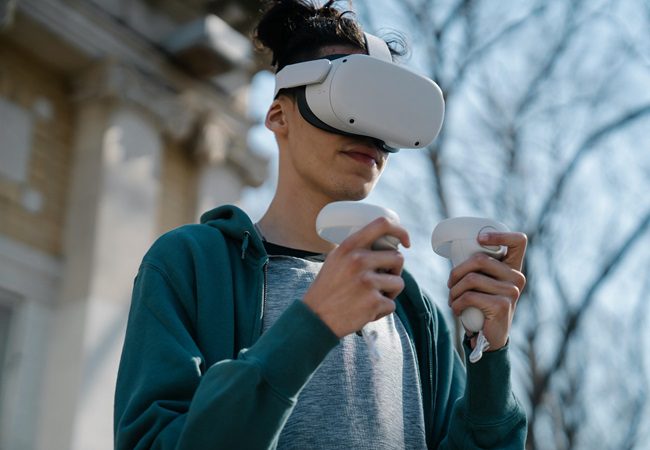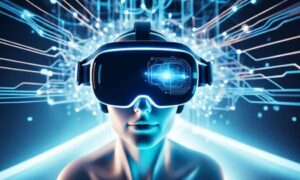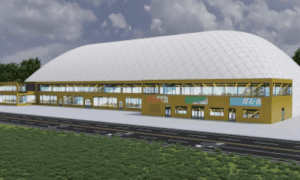Introduction:
In the realm of sports, where precision, strategy, and fan engagement play pivotal roles, Virtual Reality (VR) has emerged as a game-changer. This immersive technology is not only transforming how athletes train but also redefining the way fans experience and engage with their favorite sports. This article explores the intersection of Virtual Reality and sports, delving into how it enhances both fan engagement and training techniques.
Immersive Fan Engagement:
Virtual Reality has catapulted fan engagement into a new era, offering immersive experiences that go beyond traditional viewing. Short sentences succinctly capture the immediacy and excitement of VR-powered fan engagement, where spectators become active participants in the sports narrative.
Transitions in Virtual Fan Experiences:
Seamless transitions are fundamental in guiding fans through the immersive experiences offered by VR. For instance, a virtual fan attending a basketball game could seamlessly transition from courtside views to a panoramic overview of the entire arena. These transitions contribute to a dynamic and engaging fan experience within the virtual realm.
Virtual Reality in Live Sports Events:
The marriage of Virtual Reality and live sports events opens up a plethora of possibilities for fans. VR allows spectators to feel as if they are right in the midst of the action, providing 360-degree views of the stadium, close-ups of key plays, and even the ability to choose their preferred vantage points. Short sentences aptly capture the thrill and immediacy of this virtual sports experience.
Transitions in Virtual Stadium Exploration:
Seamless transitions are crucial in guiding virtual fans through the exploration of digital stadiums. For instance, a virtual attendee at a soccer match could seamlessly transition from cheering in the stands to experiencing the action from the perspective of their favorite player. These transitions contribute to a personalized and immersive fan experience within the virtual sports arena.
Interactive Fan Engagement:
VR extends beyond passive viewing, fostering interactive fan engagement. Virtual Reality applications enable fans to participate in activities such as virtual meet-and-greets with players, interactive polls, and even virtual cheering sections where fans can virtually connect with one another. Short sentences convey the interactive and dynamic nature of fan engagement within the virtual realm.
Transitions in Interactive Fan Activities:
Seamless transitions are fundamental in guiding fans through various interactive activities within the VR space. For instance, a virtual fan participating in a live Q&A session with a sports icon could seamlessly transition from submitting questions to engaging in a real-time conversation. These transitions contribute to a fluid and engaging interactive fan experience.
Training Techniques Elevated by Virtual Reality:
While VR is revolutionizing fan engagement, its impact on training techniques in sports is equally transformative. Athletes are incorporating Virtual Reality into their training regimens to enhance skills, simulate game scenarios, and optimize performance. Short sentences aptly convey the precision and effectiveness of VR-powered training techniques.
Transitions in Skill Enhancement Modules:
Seamless transitions are crucial in guiding athletes through various skill enhancement modules within VR training. For instance, a basketball player using VR for shooting practice could seamlessly transition from free-throw simulations to dynamic game scenarios. These transitions contribute to a comprehensive and interactive training experience within the virtual space.
Simulating Game Scenarios:
Virtual Reality allows athletes to step into realistic game scenarios without physically being on the field. This immersive simulation helps athletes anticipate moves, make split-second decisions, and refine their strategies. Short sentences succinctly convey how VR simulations elevate training by providing athletes with a dynamic and responsive practice environment.
Transitions in Scenario-Based Training:
Seamless transitions are fundamental in guiding athletes through different scenario-based training exercises within VR. For instance, a soccer player practicing penalty kicks could seamlessly transition from basic drills to simulating high-pressure game situations. These transitions contribute to a focused and adaptive training experience within the virtual realm.
Enhancing Mental Preparedness:
Beyond physical skills, Virtual Reality is proving invaluable in enhancing athletes’ mental preparedness. VR-powered simulations can recreate the pressure and intensity of real game situations, helping athletes develop mental resilience and focus. Short sentences effectively communicate how VR contributes to the mental fortitude of athletes in high-pressure scenarios.
Transitions in Mental Toughness Training:
Seamless transitions are crucial in guiding athletes through mental toughness training modules within VR. For instance, a tennis player preparing for a crucial match could seamlessly transition from visualization exercises to simulated high-stakes tie-breakers. These transitions contribute to a holistic and immersive mental preparedness training experience.
Rehabilitation and Injury Prevention:
Virtual Reality is also playing a role in sports rehabilitation and injury prevention. VR-based exercises can aid in the recovery process, providing athletes with interactive rehabilitation programs tailored to their specific needs. Short sentences convey the targeted and personalized nature of VR applications in sports rehabilitation.
Transitions in Rehabilitation Protocols:
Seamless transitions are fundamental in guiding athletes through personalized rehabilitation protocols within VR. For instance, a runner recovering from a leg injury could seamlessly transition from low-impact exercises to progressively challenging simulations of running scenarios. These transitions contribute to a customized and effective rehabilitation experience within the virtual space.
The Rise of Virtual Sports Leagues:
Virtual Reality is not only transforming how sports are experienced and trained but also giving rise to entirely virtual sports leagues. Esports, which involve competitive gaming within virtual environments, are gaining popularity and blurring the lines between traditional sports and digital competitions. Short sentences aptly convey the rise and excitement surrounding virtual sports leagues.
Transitions in Esports Competitions:
Seamless transitions are crucial in guiding enthusiasts through various virtual sports competitions. For instance, a fan attending a virtual basketball league could seamlessly transition from one game to another, experiencing the intensity and excitement of esports tournaments. These transitions contribute to a dynamic and engaging esports viewing experience.
Challenges and Opportunities:
While the fusion of Virtual Reality and sports presents immense opportunities, it is not without its challenges. Issues such as the cost of VR technology, potential health concerns, and the need for widespread adoption need to be addressed. Short sentences succinctly highlight potential challenges while emphasizing the ongoing opportunities for innovation and improvement in the marriage of VR and sports.
Transitions in Overcoming Challenges:
Seamless transitions are fundamental in guiding readers through potential challenges and solutions within the realm of VR and sports. For instance, addressing concerns about health risks could seamlessly transition from discussing potential issues to exploring ongoing research and advancements in VR technology. These transitions contribute to a balanced and informative discussion.
Conclusion:
The fusion of Virtual Reality and sports represents a paradigm shift in how we engage with athletics. VR not only elevates fan engagement by offering immersive and interactive experiences but also revolutionizes training techniques, enhancing the skills and mental preparedness of athletes. Short sentences capture the immediacy and dynamism of VR-powered sports experiences, and seamless transitions guide users through the various dimensions of this transformative intersection. As we navigate the virtual landscape of sports, the marriage of Virtual Reality and athletics stands as a testament to the limitless possibilities in redefining the future of sports engagement and training techniques. Embrace the evolution, as Virtual Reality becomes an integral player in the ever-evolving world of sports.































